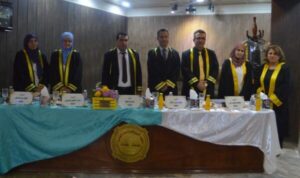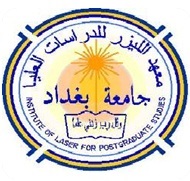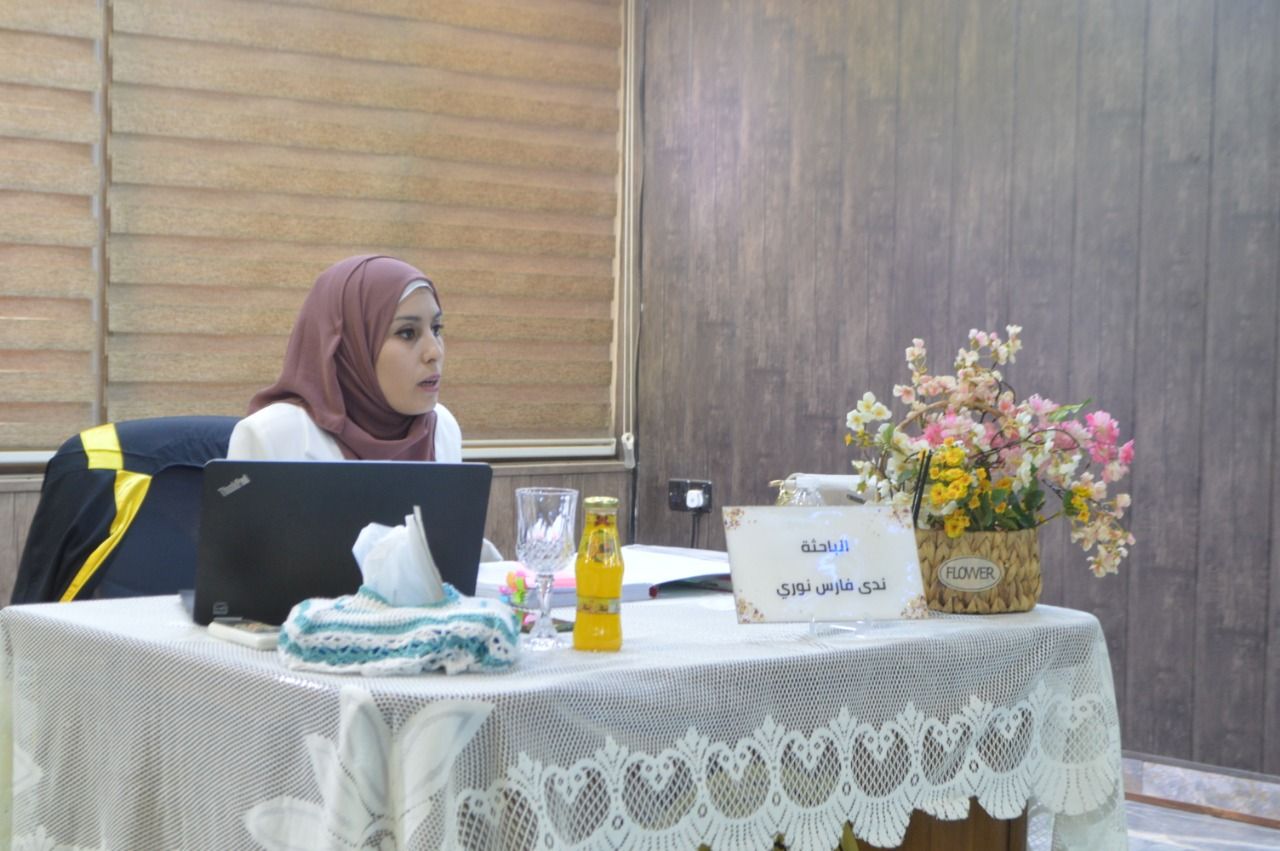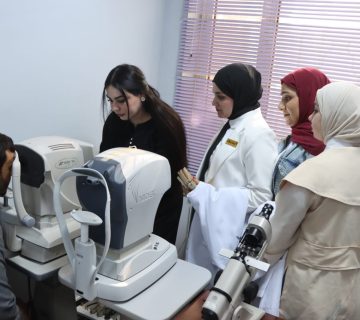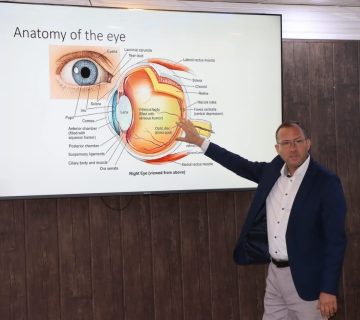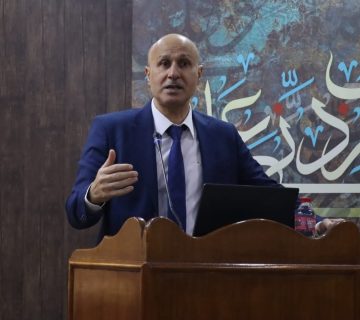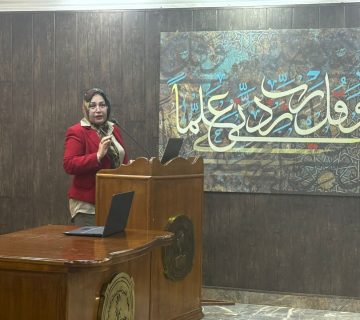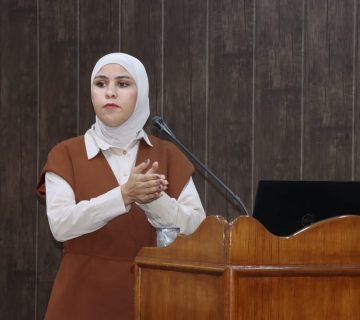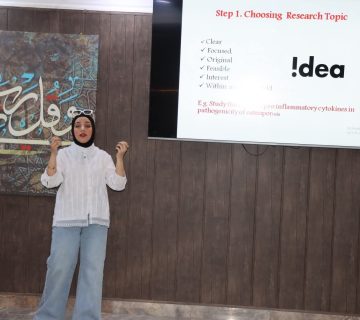The PhD student Nada Fares Nouri’s dissertation was discussed / Laser Applications / Electronic and Communications Engineering and Tagged Design and Implementation of a Hybrid Fabry
– Design and Implementation of a Hybrid Fabry-Perot Mode splitter Interferometer for Gas Pipeline Leakage Detection.
The aim of the work is to build a sensor that monitors the leakage of medical gases inside hospitals using hybrid fiber inputs
The discussion committee consisted of the gentlemen whose names are listed
1- Prof. Dr. Muhammad Nazim / PhD in Nanotechnology / Electrical Engineering / Department of Electrical Engineering / College of Engineering / University of Baghdad /Chairperson
- Asst. Prof. Dr. Zainab Fadel Mahdi / PhD Laser and Spectra / Physics / the Institute of laser for Postgraduate Studies / University of Baghdad / Member
- Asst. Prof. Dr. Anwar Abdel Sattar / PhD in Laser Engineering and Optoelectronics / Optoelectronics Engineering / College of Engineering / Al-Nahrain University Member
4- Asst. Prof. Dr. Firas Ali Saber / PhD in Electrical and Electronic Engineering / Communications Engineering / College of Engineering / University of Baghdad / Member
5 – Asst. Prof. Dr. Muzaffar Hussain Ali / Ph.D. in Communications Engineering / Optical Communications / Iraqi University / Member
6 – Asst. Prof. Dr. Tahrir Safaa Mansour / Ph. D in Laser / Electronic Engineering and Communications / the Institute of laser for Postgraduate Studies / University of Baghdad / Member and Supervisor
Where the aim of the study was to build a sensor that monitors the leakage of medical gases inside hospitals using hybrid fiber inlets
The continuous monitoring of infrastructure pipelines is one of the most vital services in modern smart cities and facilities. Over the past decade, various types of systems have been designing, realizing and implementing various types of systems for monitoring infrastructure pipelines built using optical fibers, such as monitoring pipelines transporting oil, water and natural gas. In addition, the emergence of hybrid light interventions built using optical fibers has led to an improvement in the ability of sensing and monitoring systems for infrastructure pipes on a large scale, with the emergence of the possibility of measuring more than one variable at the same time.
This thesis included the presentation of a new model for a hybrid fiber linear optical entrance built using a multi-mode optical fiber engraved and linked between two optical fibers reflecting the light of the Bragg type.
This study has studied and investigated different types of optical fibers such as polarity preservation fibers, coreless fibers, and multimode fibers to function as sensor terminals within different types of successive optical fiber structures and to perform hybrid linear optical inputs between the two types of Machender and Fabry-Prot. Therefore, the final design of the sensor was based on a structure of successive optical fibers, which in turn consisted of four different models with coating thicknesses of 125, 112, 89 and 69 micrometers respectively, and a double fiber Bragg resonator with a reflectivity of more than 90% and a central reflection wavelength of 1546.7. nm with two free fiber cores. A medical gases supply system was built that simulates the systems in medical buildings, according to the British Code of Medical Gases and their pressures used in Iraq. Where two different sizes of medical gases tubes, measuring 15 x 0.7 mm and 12 x 0.6 mm were used to investigate gas leakage with the maximum amount of air pressure coming out of the compressor equal to 4 bar. Then, the leakage from the pipes was measured using the hybrid inlets proposed in this study.
Various cases of gas leakage have been investigated, for example; Variable flow and constant pressure, variable pressure and constant flow, and both pressure and flow are variable. Two sources were used to supply the medical gases to the system; the first is a reverse circulation medical air compressor with a maximum pressure of 10 bar and compressed medical air bottles with a capacity of 10 bar (Standard No. DOT-3AA 2015). The sensitivity of the hypothesized hybrid optical inputs in this thesis has been studied and achieved with two different optical signal sources; The first is a narrow-band laser coming out of a laser light-emitting diode with a wavelength of 1546.7 nm, with a maximum power of 1.3 milliwatts.
One of the most important recommendations of the study is that drilling multi-mode optical fibers that maintain polarity contributes greatly to improving their sensitivity to external influences, but multi-mode optical fibers showed five times better response to mechanical forces and the changing environmental conditions that surround them. Whereas, the polar optical fiber showed a chemical etching sensitivity using hydrofluoric acid equal to 0.386 pcm/µm, while the multi-mode fiber showed an etching sensitivity of 1.99 pcm/µm. The best sensitivity to the leakage of medicinal gases from the tubes was obtained using the hybrid optical inlets proposed in this dissertation by calculating the wavelength shift under the influence of the leaking gas and was equal to 17 and 20 pcm per bar for the tubes 15×0.7 mm and 12×0.6 mm, respectively. It was measured in the case of stable thrust and change in the pressure of the leaked air, and when the used sample contained a multi-mode optical fiber with a length of 4. 5 cm, and an engraved cladding thickness of 89 micrometers. In addition, the higher thickness gas tube sample showed better sensitivity than the thin gas tube sample. Also, the sensitivity of the sensor was higher when the light source used was a narrow-beam laser diode than the same light source with a wide beam.
The researcher obtained a doctorate degree with a grade of “good” due to her real efforts in preparing the dissertation.
